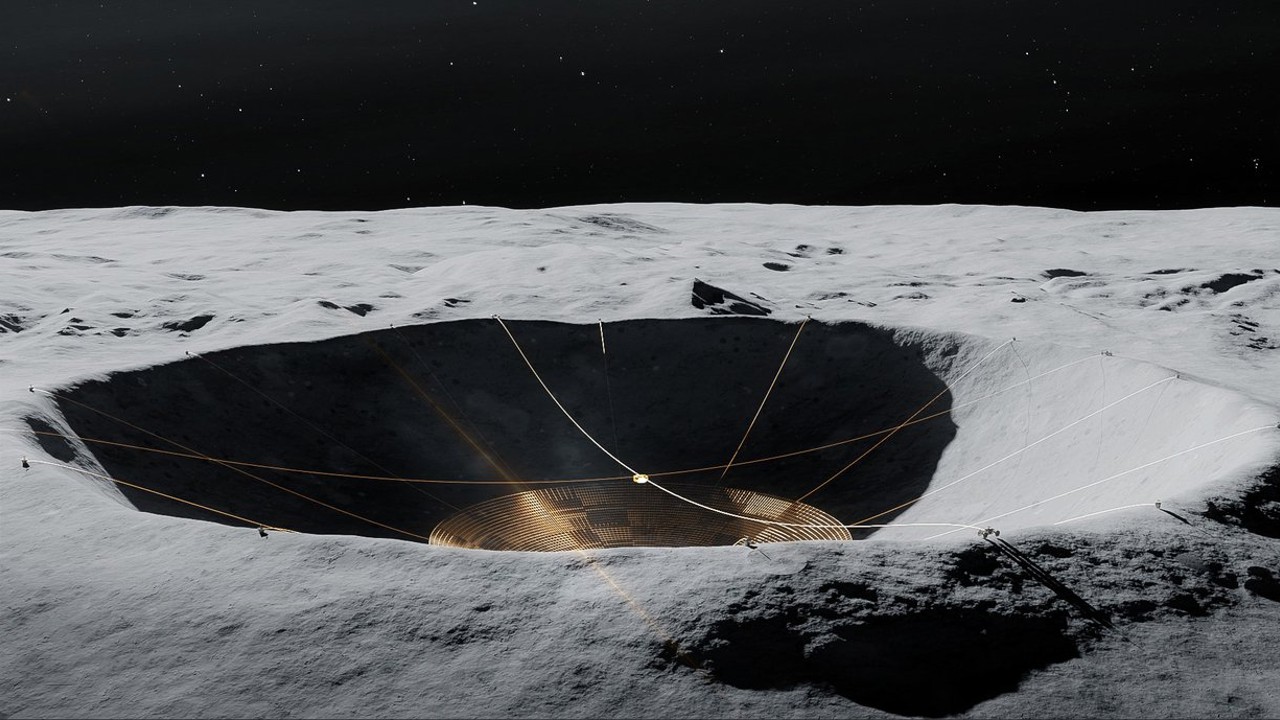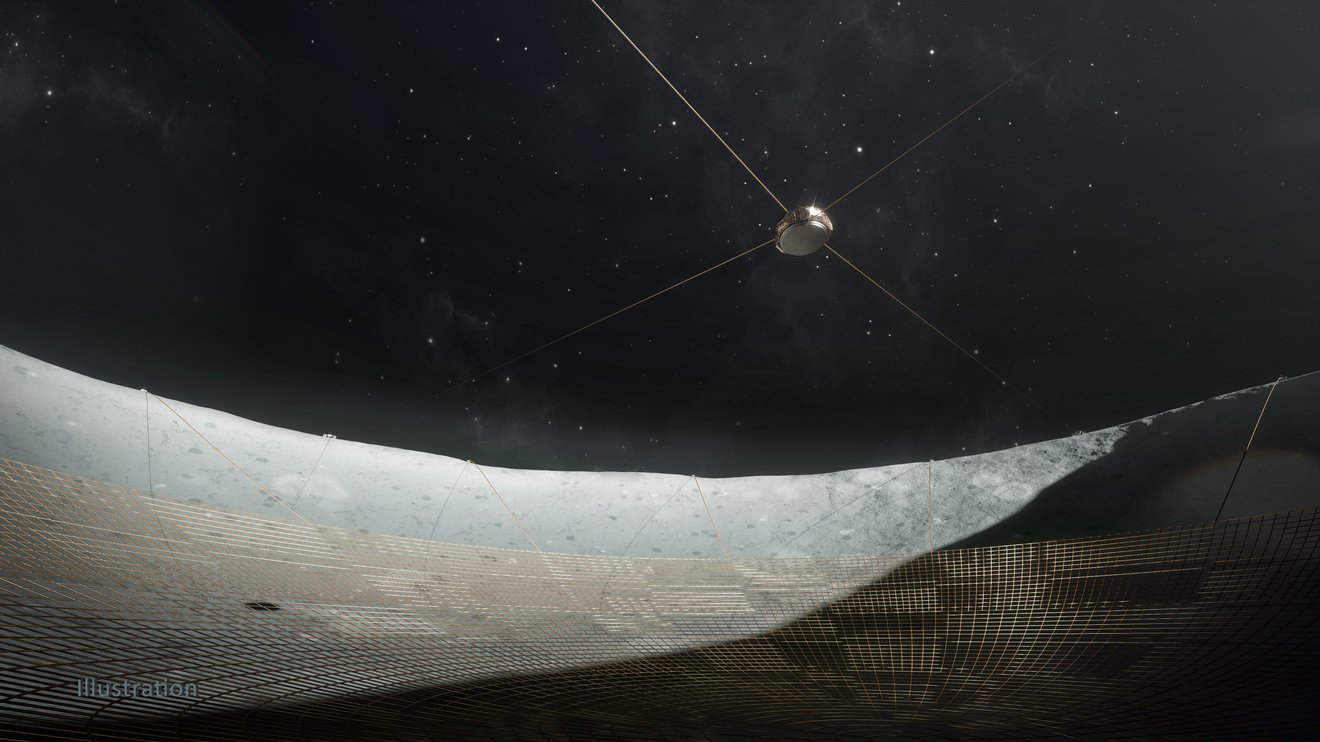The moon could be perfect for cutting-edge telescopes — but not if we don't protect it

"We are entering a new era of science investigations from our nearest neighbor in space."

Space scientists are eager to protect the option of doing astronomy from the moon.
There are plans in the works to place astronomical hardware on the lunar landscape such as super-cooled infrared telescopes, a swath of gravitational wave detectors, large Arecibo-like radio telescopes, even peek-a-boo instruments tuned up to seek out evidence for "out there" aliens.
Yes, the future of lunar astronomy beckons. But some scientists say there's an urgent need to protect any moon-based astronomical equipment from interference caused by other planned activities on the moon, ensuring they can carry out their mission of probing the surrounding universe.
To that end, efforts are ongoing to scope out and create policy in conjunction with the United Nations in the hope of fostering international support for such protections.
Related: Gravitational wave detectors on the moon could be more sensitive than those on Earth
Global agreements
This action plan is spearheaded by the International Astronomical Union (IAU). The IAU brings together more than 12,000 active professional astronomers from over 100 countries worldwide.
Richard Green is chair of the IAU group specific to looking at the issues of staging astronomy from the moon. He is also an assistant director for government relations at Steward Observatory, run by the University of Arizona in Tucson.
Breaking space news, the latest updates on rocket launches, skywatching events and more!
The IAU working group is aiming to collaborate with a number of other non-governmental organizations to protect the option of doing astronomy from the moon, Green tells Space.com.
A number of participants in the IAU working group are spectrum managers from radio observatories, strongly linked to the International Telecommunication Union (ITU) and ITU's World Radiocommunication Conference, a treaty-level forum to review and revise, if necessary, radio regulations and global agreements regarding use of the radio-frequency spectrum and the geostationary-satellite and non-geostationary-satellite orbits.
The working group members want to maximize the range of protected frequencies, "including the very low frequencies needed to study the early universe and auroral emissions from planets," Green says.
Equitable access
The other approach, says Green is for protection of sites on the moon that might be suitable for cooled infrared telescopes or gravitational wave detector arrays.
"We have common cause with those who want to protect historical legacy sites and even those who want dedicated sites for extracting water or minerals," Green says. "We imagine that the United Nations Committee on the Peaceful Uses of Outer Space is the venue in which some process can be developed to claim a site for protection and to resolve competing claims."
The IAU Astronomy from the moon working group has space law and policy experts who can provide a strong basis for that approach, Green says.
"Of course, the main goal is to conduct astronomical observations that can be uniquely done from the moon," Green explains. The working group is embracing the expertise of principal investigators of lunar missions or concepts for missions.
Doing so, Green says, can help engage the astronomical community in prioritizing sites of extreme scientific interest and take in issues of conducting science in an environment for which "equitable access" is anchored in the spirit of the United Nations 1967 Outer Space Treaty.
Clearly required
A thumbs-up approval of the IAU initiative is Ian Crawford, a professor of planetary science and astrobiology at Birkbeck College, London.
"My own view is that a subset of lunar locations, for example specific polar craters and key far side locations, need to be designated as 'Sites of Special Scientific Importance' and protected as such, Crawford told Space.com.
A possible model, Crawford suggests, might be the Antarctic Specially Protected Areas (ASPAs) as defined in Annex V of the Environmental Protocol to the Antarctic Treaty.
"In any case, international coordination is clearly required so United Nations involvement appears entirely appropriate," Crawford says.
Private partnerships
NASA is working with several U.S. firms to deliver science and technology to the moon's surface by way of the Commercial Lunar Payload Services (CLPS) initiative.
Given the uptick in future CLPS-enabled robotic lunar exploration, we are about to the see the first NASA-funded science payloads landed there in over 51 years — since the Apollo 17 human moon landing in December 1972, says Jack Burns, professor emeritus in the department of astrophysical and planetary sciences at the University of Colorado, Boulder.
One payload, for which Burns serves as co-investigator, is called the Radio Wave Observations on the Lunar Surface of the photoElectron Sheath (ROLSES). If successful, it would be the first radio telescope on the moon and situated at the lunar south pole. ROLSES is to be emplaced there in February via the Intuitive Machines Nova-C lunar lander's IM-1 mission under the CLPS partnership.
This will be followed in two years by the Lunar Surface Electromagnetics Experiment-Night, or LuSEE-Night, slated to fly in 2026 aboard the Firefly Aerospace Blue Ghost Mission-2 lander. This endeavor is also part of the CLPS undertaking and Burns is a science team member of the LUNAR far side experiment.
LuSee-Night is a radio telescope that will look into the never-before seen dark ages of the early universe — a time before the birth of the first stars.
Science fact
With this potential and promising burgeoning of radio astronomy from the moon, Burns says "it is essential that we now develop international agreements to protect the far side of the moon for radio astronomy as it is the only truly radio-quiet site in the inner solar system."
Burns emphasizes that radio observations from the moon are no longer science fiction but science fact.
"We are entering a new era of science investigations from our nearest neighbor in space," Burns says.

Leonard David is an award-winning space journalist who has been reporting on space activities for more than 50 years. Currently writing as Space.com's Space Insider Columnist among his other projects, Leonard has authored numerous books on space exploration, Mars missions and more, with his latest being "Moon Rush: The New Space Race" published in 2019 by National Geographic. He also wrote "Mars: Our Future on the Red Planet" released in 2016 by National Geographic. Leonard has served as a correspondent for SpaceNews, Scientific American and Aerospace America for the AIAA. He has received many awards, including the first Ordway Award for Sustained Excellence in Spaceflight History in 2015 at the AAS Wernher von Braun Memorial Symposium. You can find out Leonard's latest project at his website and on Twitter.


